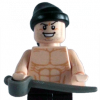Sign in to follow this
Followers
0

WA AB Class Locomotive and train - LDD
By
ummester, in LEGO Train Tech
-
Recently Browsing 0 members
No registered users viewing this page.
